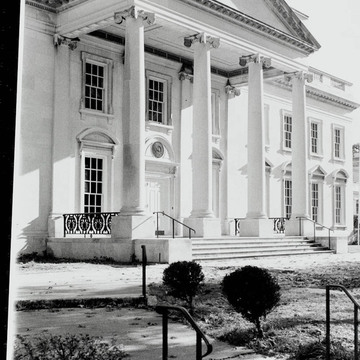You are here
Virginia Museum of Fine Arts, Center for Education and Outreach (Home for Needy Confederate Women)
Built as an annex of the R. E. Lee Confederate Veterans Camp, which originally stood on the site of the present-day Virginia Museum of Fine Arts, this building housed the wives and daughters of former Confederate soldiers. The seven remaining residents vacated the building in 1989, and the state legislature turned it over to the Virginia Museum. The Glave Firm has converted it into offices, reception, and classrooms for the museum. The original design architect, Merrill C. Lee, chose the north front of the White House as the motif for the central block. The replica, which has a limestone exterior, is scaled down; the portico is only one column deep and not as high as the original. To the
Writing Credits
If SAH Archipedia has been useful to you, please consider supporting it.
SAH Archipedia tells the story of the United States through its buildings, landscapes, and cities. This freely available resource empowers the public with authoritative knowledge that deepens their understanding and appreciation of the built environment. But the Society of Architectural Historians, which created SAH Archipedia with University of Virginia Press, needs your support to maintain the high-caliber research, writing, photography, cartography, editing, design, and programming that make SAH Archipedia a trusted online resource available to all who value the history of place, heritage tourism, and learning.

